History of Delhi Metro’s ITO – Kashmere Gate Heritage Line
With less than 24 hours to go for the launch of Delhi Metro’s 5.17 km ITO – Kashmere Gate underground section of the 43.4 km Violet Line, here’s a post with some brief, high-level information on the line’s history. I’ve divided its timeline up into 3 distinct periods which’ll help demonstrate how much time was spent on each activity.
Popularly known as the Heritage Line, this section is overall a part of the 160 km Phase 3 project’s 9.37 km northern extension of the Violet Line. Other sections opened up in June 2014 (Central Secretariat – Janpath – Mandi House, 3.03 km) and June 2015 (Mandi House – ITO, .972 km). This last section of the line was originally scheduled to open up in December 2015 but ran into two major issues:
1) Discovery of what is said to be an old mosque while excavating the site for the Jama Masjid Station. Locals claimed it was demolished by the British after the Indian Rebellion of 1857, and soon after took over a part of the site & built a brick structure resembling it. This forced the DMRC to change the station’s site and redraw the tunnels’ alignment to pass underneath weak residential structures at Kalan Mahal instead of Netaji Subash Marg. During the TBM drives, the DMRC had to twice re-accommodate around 2000 residents to nearby hotels.
2) One of the Mitsubishi TBMs damaged its cutterhead midway and broke down between Jama Masjid and Delhi Gate. This forced the contractor to build a mid-shaft opposite Golcha Cinema in Daryaganj and launch a ‘rescue’ TBM from the Delhi Gate-end to build the rest of the tunnel.

Map of ITO – Kashmere Gate section of Delhi Metro’s Violet Line – view Delhi Metro Phase 3 map & information
This section consists of two civil packages:
• CC-05 – Mandi House – Jama Masjid: 3.6 km with 3 new stations at ITO, Delhi Gate and Jama Masjid
• CC-07 – Jama Masjid – Kashmere Gate: 2.8 km with 2 new stations at Lal Quila and Kashmere Gate
Pre-Tunneling Period (2011-2013)
Q3 2011 – Delhi Metro Rail Corporation invited global ICB bids for the construction of CC-05 in August 2011, and for CC-07 in September 2011.
Q1 2012 – Package CC-05 was awarded to L&T-SUCG JV with a contract value of Rs. 718.87 crores on January 23, while package CC-07 was awarded to the Metrostroy-Era JV with a contract value of Rs. 559.90 crores on March 6.
Tunneling Period (2013-2016)
• For CC-05, L&T-SUCG JV deployed 3 TBMs to make 5 breakthroughs (+2 breakthroughs in 2013 on the Mandi House – ITO section which opened up on June 8 2015):
TBM-1: Mitsubishi
TBM-2: Mitsubishi
TBM-3: STEC-3
The Mitsubishi TBMs were launched from Mandi House towards Delhi Gate, and then from Jama Masjid to Delhi Gate. The STEC-3 ‘rescue’ TBM was launched from Delhi Gate to the Golcha mid-shaft to build the remaining portion of the up-line tunnel.
• For CC-07, Metrostroy-Era JV deployed 2 mixed/rock EPB TBMs to make 4 breakthroughs:
TBM-1: Terratec (S23)
TBM-2: Terratec (S24)
These TBMs were launched from Jama Masjid towards Lal Quila, and then again from Kashmere Gate towards Lal Quila
Timeline:
• March 2014– L&T-SUCG’s TBM-1 arrived at Delhi Gate from ITO (down-line)
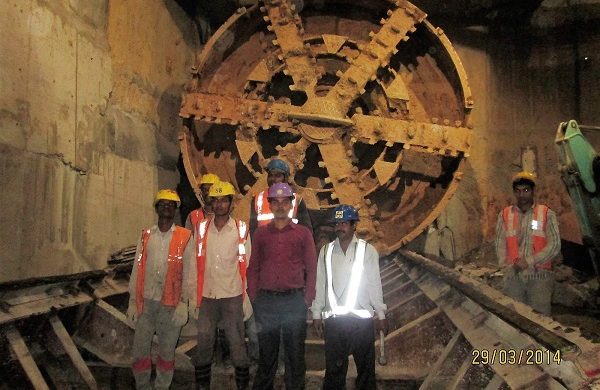
Photo Copyright: Ajayraj Sengar
• June 2014 – L&T-SUCG’s TBM-2 arrived at Delhi Gate from ITO (up-line)
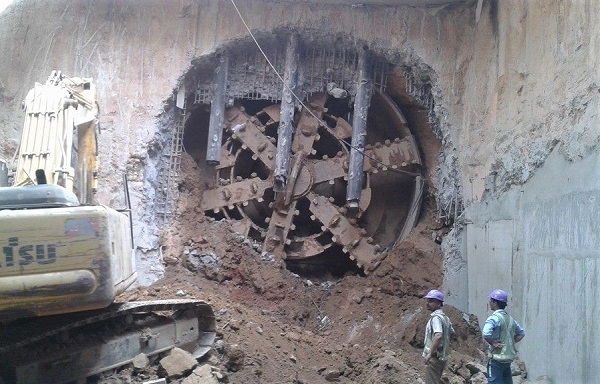
Photo Copyright: Ajayraj Sengar
• July 31, 2014 – Metrostroy-Era’s TBM S23 arrived at Lal Quila from Jama Masijd (down-line tunnel)

Photo Copyright: Terratec
• December 2014 – Metrostroy-Era’s TBM S24 arrived at Lal Quila from Jama Masijd (up-line tunnel)
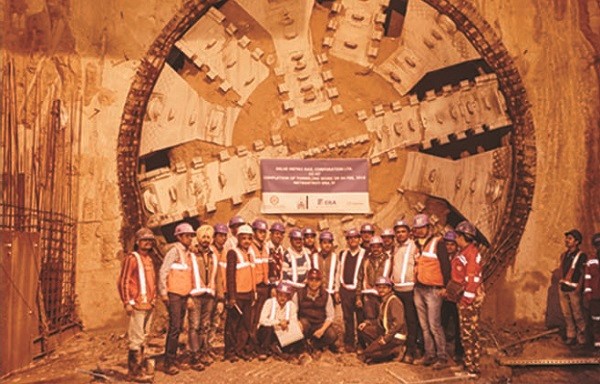
Photo Copyright: Terratec
• August 3, 2015 – Metrostroy-Era’s TBM S23 arrived at Lal Quila from Kashmere Gate (up-line tunnel) – more details
• February 4, 2015 – Metrostroy-Era’s TBM S24 arrived at Lal Quila from Kashmere Gate (down-line tunnel) – more details
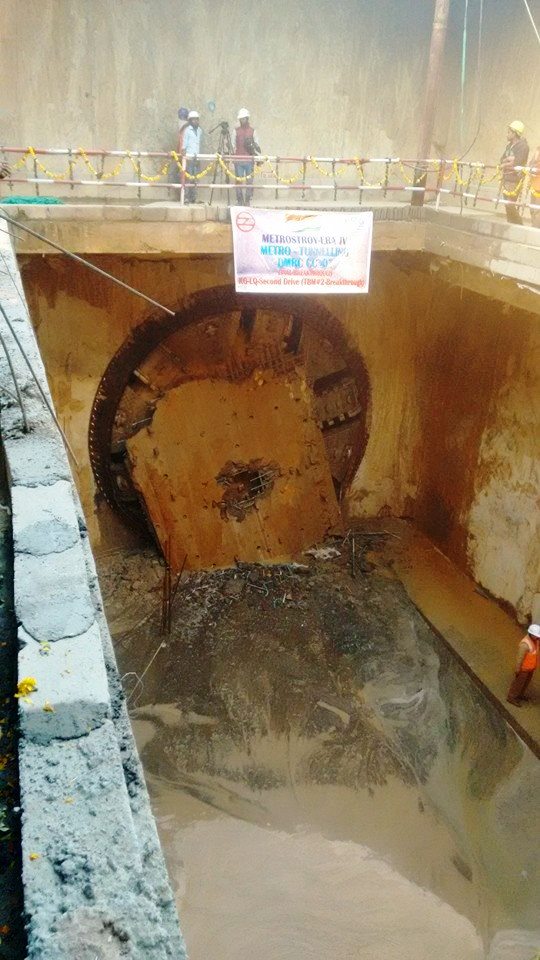
Photo Copyright: Alok Tyagi
• December, 2015 – L&T-SUCG’s TBM-1 arrived at the Golcha mid-shaft from Jama Masjid (up-line tunnel)
– no breakthrough image is available at this time. The damaged TBM was extracted after sitting at this spot for a little more than a year.
• February 9, 2016 – L&T-SUCG’s STEC-3 arrived at the Golcha mid-shaft from Delhi Gate (up-line tunnel) – more details
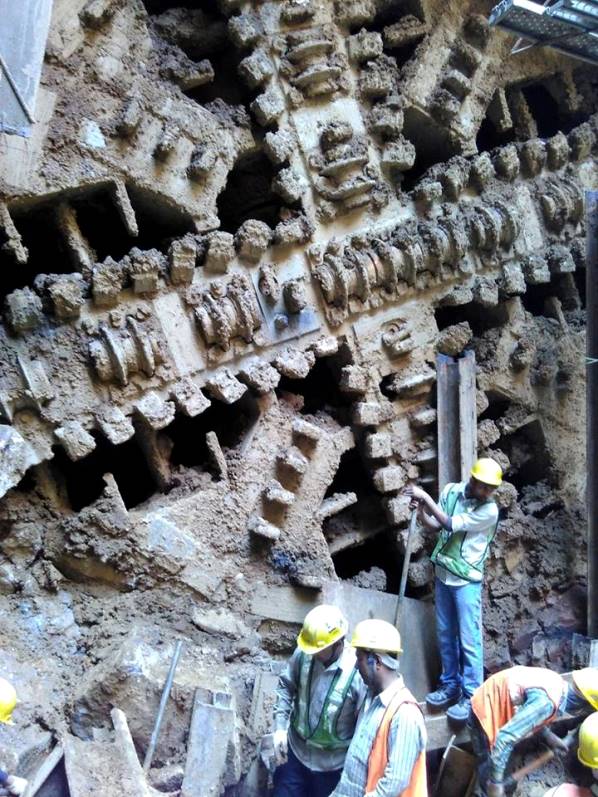
Photo Copyright: Birju Bhai Sadram
• March 11, 2016 – Final TBM breakthrough by L&T-SUCG’s TBM-2 TBM at Delhi Gate from Jama Masjid (down-line) – more details
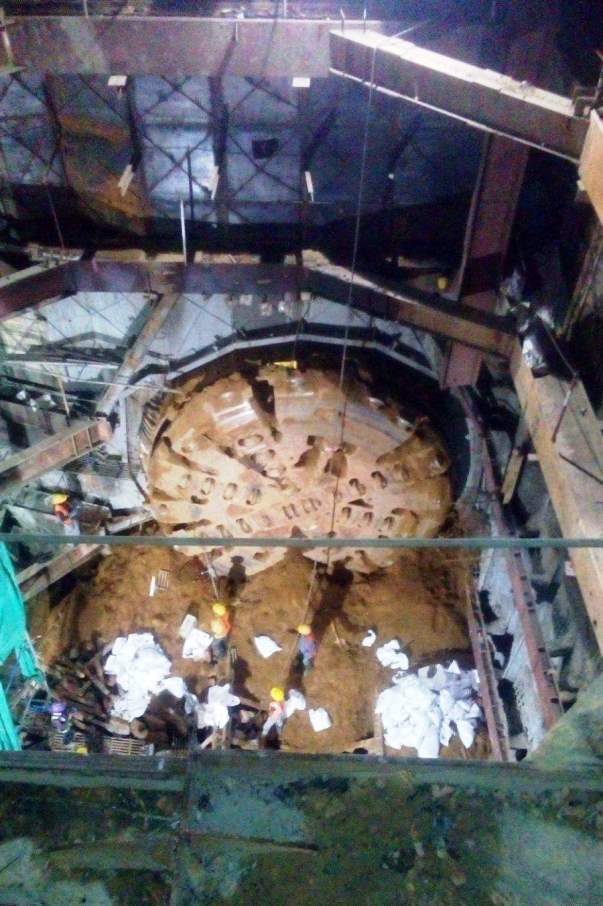
Photo Copyright: Shamshad Ali
Post-Tunneling Period (2016-2017)
Trial runs on this section were launched from the ITO Station in August 2016 and an independent safety assessor (ISA) conducted an inspection of the signalling system in late-March 2017. The Delhi Metro Rail Corporation submitted its application to the CMRS in April following which a 2-day inspection was conducted on May 22-23.
For 20+ brilliant images from inside the stations showcasing artwork and new AFC “dream gates”, check out this post.
Did I miss out on anything? Looking forward to this section’s inauguration at 10 am and public launch at 12 noon tomorrow! 😀
For more updates, check out the Delhi section of The Metro Rail Guy!
– TMRG




Excellent pics and videos. Great job done.
TY! 🙂
What about CC-06. Where is that and who built it?
CC-06 is the 13. 75 km Badarpur – Escorts Mujesar section on the same line. T’was constructed by L&T and opened up in Sept 2015 as you might already know.
Does this mean that now both platforms of Mandi house and ITO stations will be operational?
And do they plan to still terminate few trains at ITO?
1) Yes
2) DMRC has so far announced no plans of doing that
No
Now the Trains Will Be Terminating From Escorts Mujesar To Kashmiri Gate Directly
Few Trains Can Be Still Teriminates On Central Secriteriat Or Mandi House As They Are Old Terminus Stations In The Past.